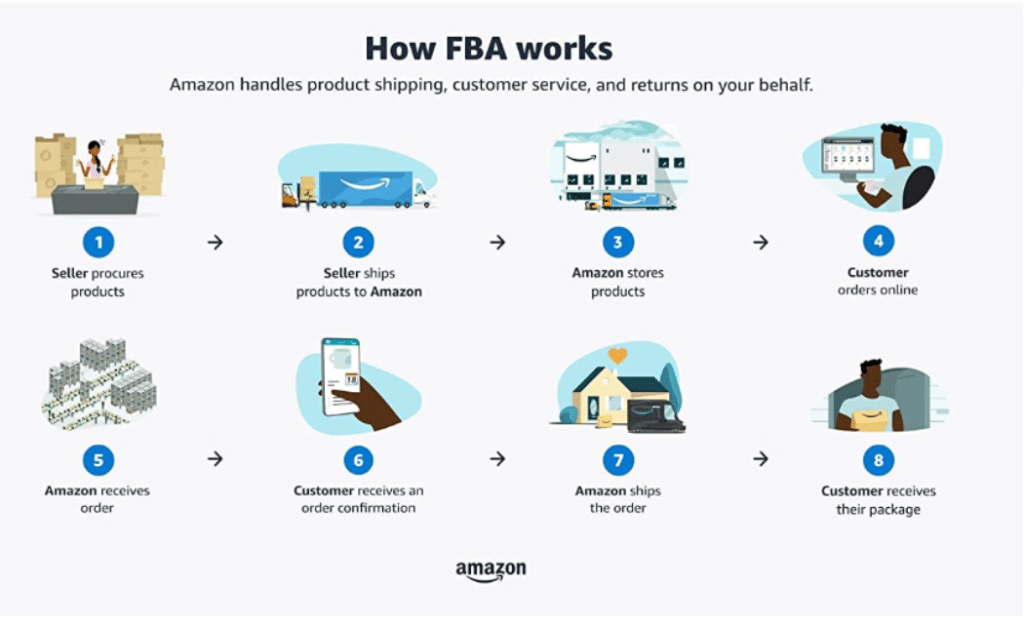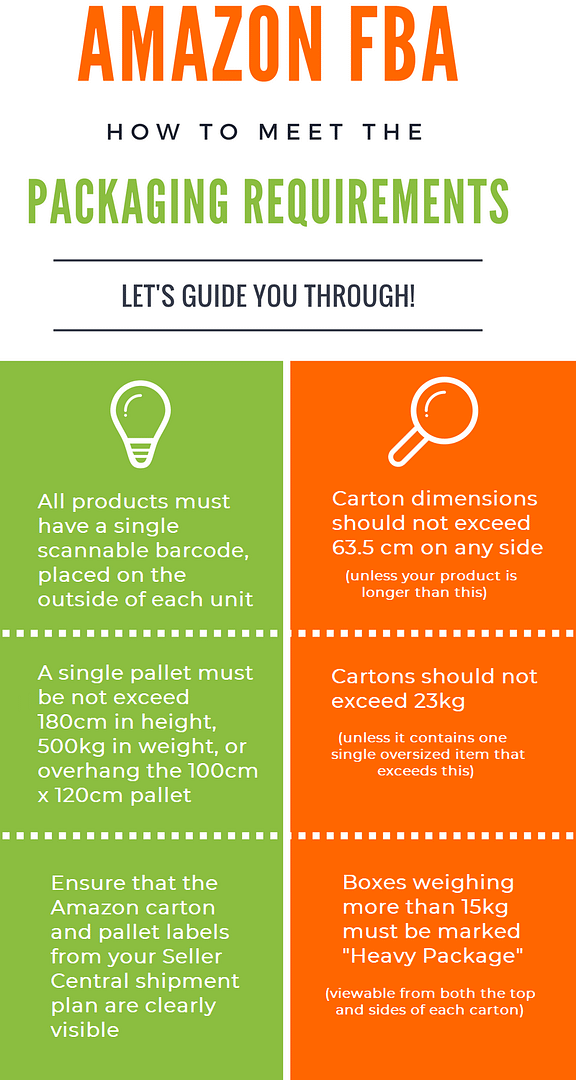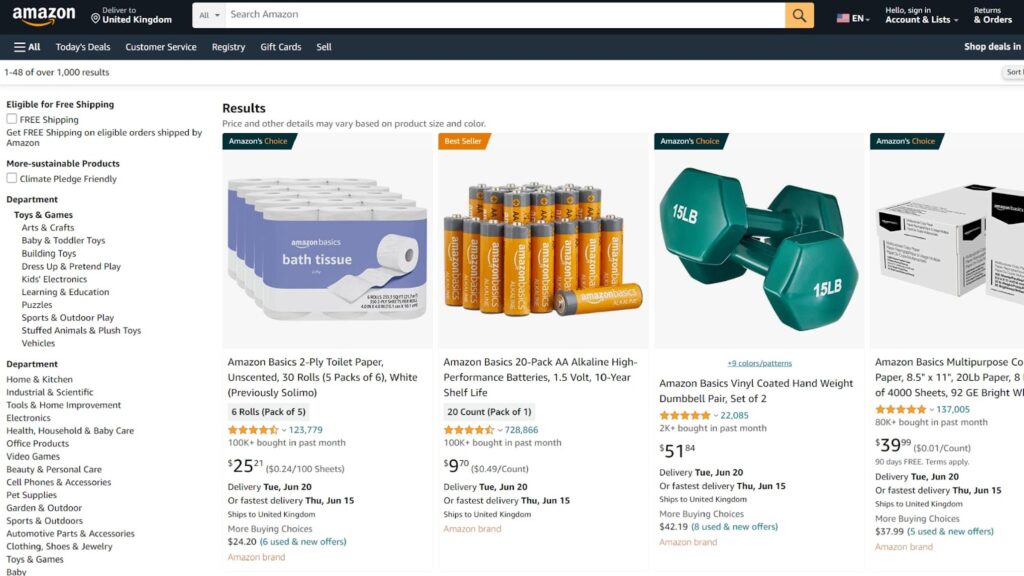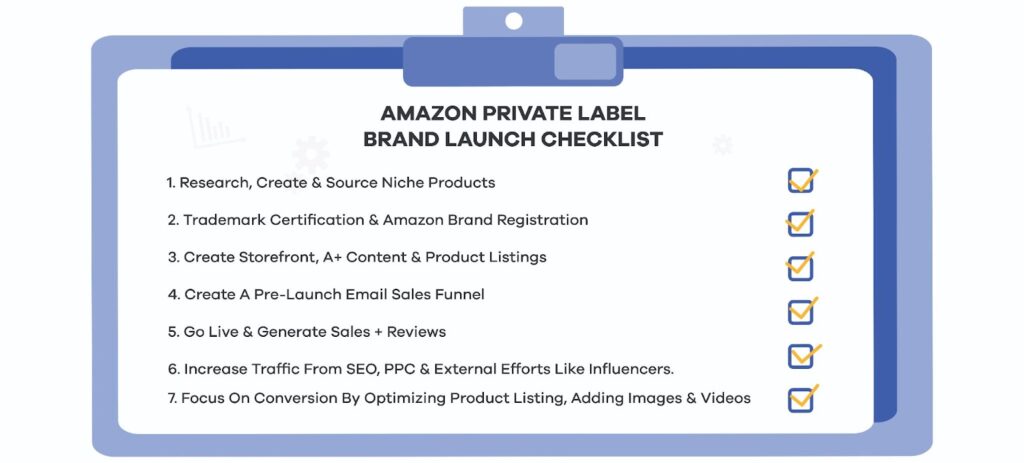Unleash the secrets of FBA labeling with our ultimate guide – maximize efficiency, reduce errors, and supercharge your Amazon sales!
Table of Contents
- Introduction to Amazon FBA Labels
- What is Amazon FBA?
- Why Proper Labeling is Key
- Types of Labels for Amazon FBA
- Printing Your Amazon FBA Labels
- Label Size Matters
- Putting Labels on Your Products
- Using Poly Bags for FBA
- Common Mistakes to Avoid
- Summary: Your Ultimate FBA Label Guide
- FAQs About Amazon FBA Labels
Introduction to Amazon FBA Labels
When you sell items on Amazon, there are certain rules you need to follow, and one of the most important ones is labeling your products correctly. In this section, we will explore why labels are crucial for Amazon FBA sellers and what you need to know about Amazon’s labeling requirements.
Amazon FBA labeling requirements are guidelines set by Amazon that sellers must adhere to when preparing and shipping their products to Amazon’s fulfillment centers. These requirements ensure that your products are stored, picked, packed, and shipped efficiently and accurately.
What is Amazon FBA?
Amazon FBA stands for Fulfillment by Amazon, which is a service provided by the e-commerce giant to help people who sell products on their platform. Essentially, FBA allows sellers to store their products in Amazon’s warehouses, and when orders come in, Amazon takes care of picking, packing, and shipping the items to the customers. It’s like having a team of helpers manage your inventory and shipping for you!
The role of FBA in selling
With FBA, sellers can focus on sourcing great products and promoting their listings, while Amazon handles the logistics of storing and shipping those products. This not only saves sellers time and effort but also gives them access to Amazon’s vast network of distribution centers, which can help speed up delivery times to customers.
Why Proper Labeling is Key
Proper labeling is like giving your product a special ID card that helps Amazon know exactly what it is and where it needs to go. Imagine going to a big party with lots of presents. If all the gifts had labels with the wrong names or no labels at all, it would be chaos! That’s why putting the right stickers on your products is super important when you sell stuff on Amazon.

Image courtesy of via Google Images
Amazon’s Rules for Labels
Amazon has some specific rules about how labels should look and where they need to be placed on your packages. These rules are like a secret code that only Amazon can understand. If you follow these rules, your products will be in good shape and ready to be sent to their new homes. It’s like making sure you have the right address on an envelope before you mail a letter.
In order to make sure everything runs smoothly and efficiently, Amazon requires that your labels are clear, easy to read, and placed in the right spot on your product packaging. By following these rules, you can avoid any mix-ups or delays in getting your products to your customers.
Types of Labels for Amazon FBA
When it comes to selling products through Amazon FBA, using the right labels is crucial. Let’s dive into the different types of stickers you might need to use for your items.
Barcode Labels
Barcode labels are essential for products being sold on Amazon. These labels contain unique codes that help Amazon track and manage your inventory. The barcode is scanned at various stages, from receiving inventory at the warehouse to shipping it out to customers.
Warning Stickers
Depending on the nature of your product, you might need to use warning stickers to comply with safety regulations. These stickers alert customers to important information, such as choking hazards or fragile contents. It’s important to follow Amazon’s guidelines regarding the use of warning stickers to ensure the safety of your customers.
By understanding the different types of labels required for Amazon FBA, you can ensure that your products are properly labeled and ready for sale. Remember, accurate and compliant labeling is key to a successful FBA business!
Printing Your Amazon FBA Labels
When it comes to selling products on Amazon using the FBA program, printing the right labels is crucial. Let’s dive into how you can create these labels for your items to ensure a smooth selling process.

Image courtesy of via Google Images
Choosing the Right Printer
The first step in printing your Amazon FBA labels is to find the best thermal printer for your needs. Thermal printers are a popular choice for creating clear, high-quality labels that meet Amazon’s standards. These printers use heat to produce images on special label paper, eliminating the need for ink cartridges and producing smudge-free labels.
The Printing Process
Once you have selected a thermal printer, you can start the printing process. To begin, you will need to download the label templates provided by Amazon or create your own labels using design software. Make sure to input all the necessary information accurately, including product details and barcodes.
Next, load the label paper into the printer, ensuring it is inserted correctly to avoid any printing errors. Once everything is set up, simply click the print button on your computer to generate the labels. Make sure to check the print quality and alignment before printing large batches to avoid any mistakes.
By following these steps, you can efficiently print your Amazon FBA labels and ensure that your products are ready for sale on the platform.
Label Size Matters
When it comes to selling products on Amazon using FBA, the size of your labels is a crucial aspect to consider. Different products require different label sizes, and getting it right ensures that your items are properly identified and processed by Amazon. Let’s dive into why label size matters so much!
Understanding Amazon FBA Label Size Requirements
Amazon has specific rules regarding the size of labels that need to be attached to your products. These requirements ensure that the labels are easily scannable and visible for efficient processing in Amazon’s warehouses. The standard label size for FBA products is typically 3 inches by 1 inch, but it’s essential to double-check the specific requirements based on the size and type of product you are selling.
Matching Label Size to Product Type
It’s important to match the label size to the type of product you are selling. For larger items, you may need a bigger label to ensure that it is clearly readable. On the other hand, smaller products may require a more compact label to fit appropriately without overshadowing the packaging. By choosing the right label size for each product, you can ensure that your items are processed smoothly through Amazon’s fulfillment centers.
Overall, paying attention to label size is a simple yet critical aspect of selling on Amazon using FBA. By following Amazon’s guidelines and selecting the appropriate label size for your products, you can streamline the fulfillment process and provide a better experience for both yourself and your customers.
Putting Labels on Your Products
When it comes to selling your products on Amazon using FBA, putting labels on your items is a crucial step. It ensures that your products are properly identified and can be processed smoothly within Amazon’s warehouses. Let’s dive into the specifics of where and how to place those all-important stickers!

Image courtesy of via Google Images
Amazon FBA Label Placement
Amazon has specific rules about where the labels should go on your products. Typically, the labels need to be placed on the most visible side of the item so that they can be easily scanned and identified by Amazon’s systems. It’s important to follow these guidelines to avoid any delays or issues with your inventory.
Make sure that the labels are applied flat and smoothly on a clean, flat surface without any wrinkles or bubbles. This ensures that the barcode can be scanned accurately, which is crucial for tracking and managing your inventory.
Additionally, if you are using poly bags to package your items, make sure that the labels are placed on the outside of the bag in a visible and easily scannable location. This helps Amazon’s employees quickly identify and process your products.
By following these simple guidelines for labeling your products, you can ensure a smooth and efficient process when using Amazon FBA. Proper label placement is key to ensuring that your items are processed quickly and accurately within Amazon’s vast network of warehouses.
Using Poly Bags for FBA
When it comes to fulfilling orders for your Amazon store, sometimes you may need to use special plastic bags called poly bags. Let’s dive into why and how these poly bags are used in the FBA process.
Why Use Poly Bags?
Poly bags are transparent plastic bags that are commonly used to package items for storage and shipping. The main reason for using poly bags in FBA is to protect your products from dust, dirt, moisture, and any potential damage during storage or transit. They provide an extra layer of protection, especially for items that may not have their own packaging or are susceptible to damage.
Labeling Poly Bagged Items
When it comes to labeling products that are placed inside poly bags, it’s essential to ensure that the labels are visible and easily scannable by Amazon’s fulfillment centers. Here are a few key tips for labeling poly bagged items:
- Place the label on the outside of the poly bag: The label should be affixed to the outside of the bag, not inside or underneath it. This ensures that the barcode is easily scannable without needing to open the bag.
- Ensure the label is flat and smooth: To prevent any wrinkles or creases that could interfere with scanning, make sure the label is applied smoothly to the surface of the poly bag.
- Avoid covering important information: Be mindful of where you place the label on the bag to ensure it does not cover any crucial details or product information that may be required for identification.
By following these guidelines, you can ensure that your products are properly labeled and ready for seamless processing within Amazon’s FBA system.
Common Mistakes to Avoid
When it comes to labeling your items for Amazon FBA, there are some common mistakes that you’ll want to steer clear of. By being aware of these slip-ups, you can ensure that your products are properly labeled and ready to be shipped out to customers.

Image courtesy of via Google Images
Skipping Amazon’s Labeling Requirements
One of the biggest mistakes you can make is not following Amazon’s guidelines for labeling. It’s crucial to adhere to their rules regarding label size, placement, and design to avoid any issues down the line. Always double-check the requirements before creating and applying your labels.
| Label Name | Description | Usage |
|---|---|---|
| Polybag Label | Used for products that are already packaged in polybags. Contains information such as product name, ASIN, and barcodes. | Apply on the outside of the polybag before shipping to Amazon fulfillment center. |
| Box Label | Used for products that are packaged in boxes. Contains information such as product name, ASIN, and barcodes. | Apply on the outside of the box before shipping to Amazon fulfillment center. |
| Stickerless Commingling Label | Used for products that are eligible for stickerless commingling. Contains information to identify the inventory as comingle-worthy. | Apply on the individual units or packaging as per Amazon’s instructions. |
Using the Wrong Label Size
Another frequent mistake is using the incorrect label size for your products. Make sure to match the label size to the item you’re labeling to prevent any confusion or delays in the fulfillment process. Different products may require different label sizes, so be sure to have the right measurements handy.
Incorrect Label Placement
Placing labels in the wrong spot on your products can lead to scanning errors and fulfillment delays. Be sure to stick to Amazon’s recommended placement guidelines to ensure that your labels are easily scanned and processed at the warehouse. This simple step can save you a lot of time and headaches in the long run.
Not Using Poly Bags Correctly
If you’re using poly bags for your products, it’s essential to label them correctly. Make sure that the labels are securely attached to the bags and are easily visible for warehouse workers. Improper labeling of poly bags can lead to confusion and errors when your items are being processed.
Avoiding these common mistakes will help you streamline the labeling process for your Amazon FBA products and ensure that they are ready for shipment. By following Amazon’s guidelines, using the correct label sizes, placing labels accurately, and labeling poly bags correctly, you can set yourself up for success in the world of e-commerce.
Summary: Your Ultimate FBA Label Guide
So, you’ve learned a lot about Amazon FBA labels in this guide. Let’s do a quick recap of the essential points.
Introduction to Amazon FBA Labels
Labels are super important when you sell stuff on Amazon. They help Amazon keep track of your products and get them to the right customers.
What is Amazon FBA?
FBA stands for Fulfillment by Amazon. It’s a service that lets you store your products in Amazon’s warehouses, and they handle packing and shipping for you.
Why Proper Labeling is Key
Amazon has specific rules about how labels should look and where they should be placed on your packages. Following these rules ensures smooth processing of your orders.
Types of Labels for Amazon FBA
There are different types of labels you might need, like barcode labels or warning stickers, depending on the products you sell.
Printing Your Amazon FBA Labels
To make your labels, you’ll need a good thermal printer. It’s easy to choose the right one and print your stickers from your computer.
Label Size Matters
Using the right label size is crucial. Different products require different-sized labels, so make sure you have the correct dimensions for each item.
Putting Labels on Your Products
Knowing where to place your labels is essential to meet Amazon’s requirements. Stick them in the right spot to avoid any issues with fulfillment.
Using Poly Bags for FBA
Sometimes, you might need to use poly bags to protect your products. Make sure to label them correctly to keep everything organized.
Common Mistakes to Avoid
Be cautious not to make common errors like using the wrong label size or placing them incorrectly. Avoiding these mistakes will save you time and ensure smooth shipping.
By following this guide, you’ll be all set to label your products correctly and efficiently for Amazon FBA. If you have any questions, feel free to check out our FAQs section to find more answers.
FAQs About Amazon FBA Labels
Got questions about Amazon FBA labels? Don’t worry, we’ve got you covered! Here are some of the most common questions people ask about Amazon stickers:
Do I Really Need to Label My Products for Amazon FBA?
Yes, absolutely! Proper labeling is crucial for selling products through Amazon FBA. Amazon has specific requirements for how products should be labeled, and failing to comply with these rules can result in delays or even rejection of your inventory.
What Information Should Be Included on Amazon FBA Labels?
Amazon requires certain information to be present on your product labels, such as the product name, brand, and a scannable barcode. These details help Amazon accurately track and manage your inventory in their warehouses.
Can I Handwrite Labels for Amazon FBA?
While it may be tempting to save time by handwriting labels, it’s highly recommended to use a printed label for Amazon FBA. Handwritten labels can be unclear or easily damaged, leading to potential issues with inventory management.
What Happens If My Labels Don’t Meet Amazon’s Requirements?
If your labels don’t meet Amazon’s requirements, your products may be delayed in processing, or in the worst-case scenario, they could be rejected. It’s important to adhere to Amazon’s labeling guidelines to ensure smooth operations and customer satisfaction.
Do I Need a Special Printer for Amazon FBA Labels?
While you don’t necessarily need a special printer, it’s recommended to use a thermal printer for printing Amazon FBA labels. Thermal printers produce high-quality, durable labels that are easy to scan, making the labeling process more efficient.
